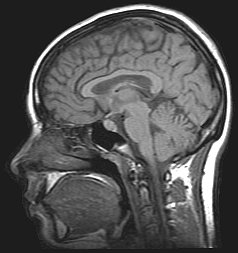Intracranial Hypertension, Idiopathic

Buchheit et al. (1969) described 2 sisters with idiopathic intracranial hypertension with papilledema (pseudotumor cerebri). Traviesa et al. (1976) described 3 affected sisters. The patients are typically young females who are obese and may be pregnant or suffering from chronic dysfunctional uterine bleeding. Johnston and Morgan (1991) described a mother and 2 of 4 daughters who had a diagnosis of pseudotumor cerebri and 1 son who developed communicating hydrocephalus.
Warner et al. (2002) quantified vitamin A in the cerebrospinal fluid of patients with idiopathic intracranial hypertension, elevated intracranial pressure of other causes, and normal intracranial pressure. Vitamin A could be detected by high-pressure liquid chromatography in most of the specimens. There was a significantly higher level of vitamin A in the cerebrospinal fluid of some patients with idiopathic intracranial hypertension. The authors concluded that vitamin A toxicity might play a role in the pathogenesis of idiopathic intracranial hypertension.
Katz et al. (2002) demonstrated the presence of both somatostatin receptor types 1 (182451) and 2 (182452) in all samples of normal human choroid plexus and arachnoid granulations. The authors proposed that these receptors might be involved in the processes of cerebrospinal fluid production and absorption and, thus, might play a role in the increased intracranial pressure of idiopathic intracranial hypertension.